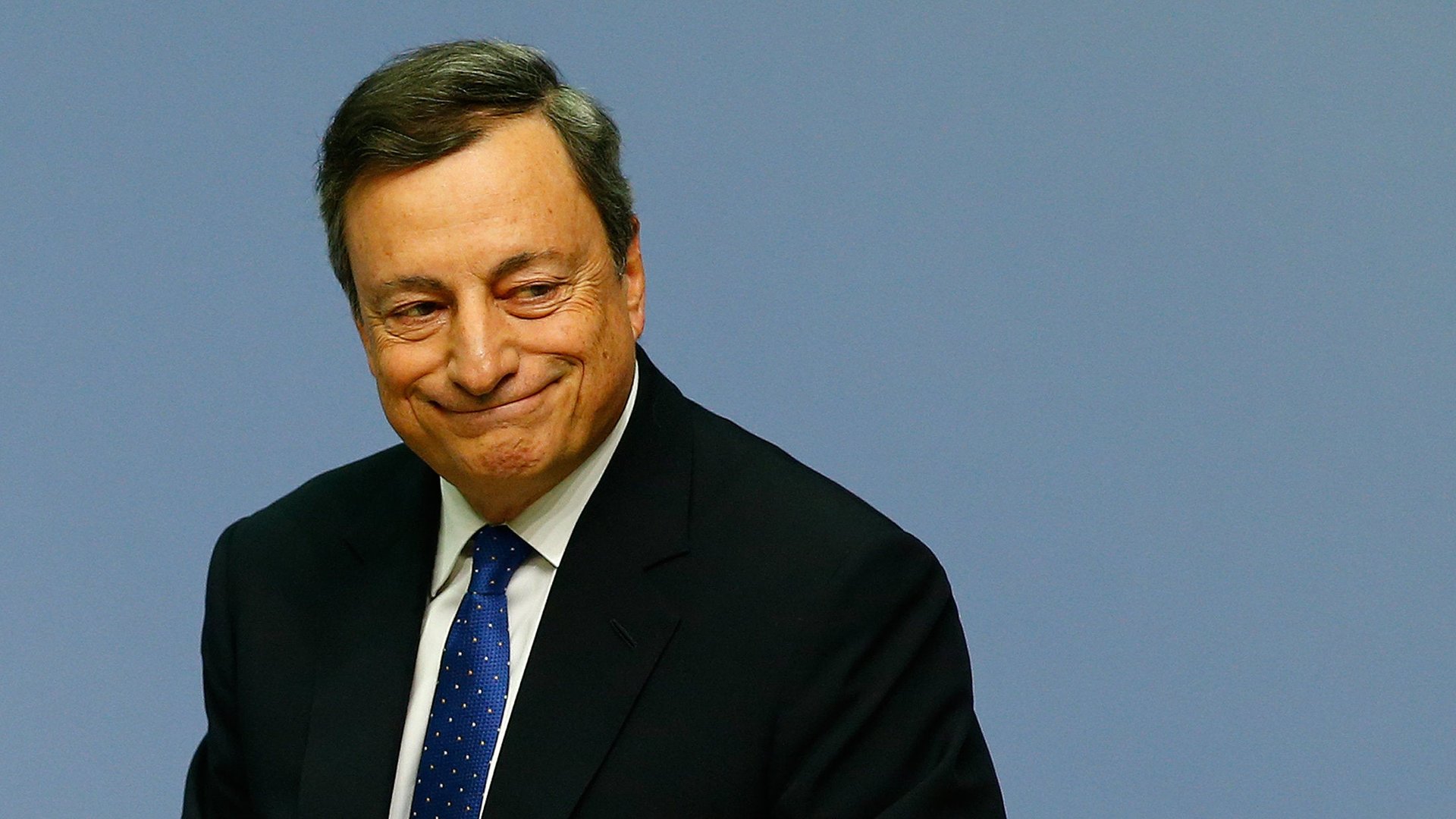Mario Draghi sends the euro on a wild ride with the most convoluted stimulus plan ever
The European Central Bank is both extending and reducing its massive monetary stimulus program.


The European Central Bank is both extending and reducing its massive monetary stimulus program.
Confused? So are investors, who couldn’t quite tell whether or not they liked what the ECB had to say today. The central bank announced that the euro-zone central bank will print money to buy bonds for nine months beyond its previously scheduled deadline, until December 2017. At the same time, the ECB will slow the pace of purchases, buying €60 billion of debt a month instead versus its current pace of €80 billion ($64 billion instead of $85 billion).
Traders initially reacted as if policy makers were withholding Christmas presents from the masses. Slowing the pace of purchases sounded like a “tapering” of so-called quantitative easing (i.e. bond buying), effectively tightening monetary policy. The euro jumped higher.
But then, almost as quickly, traders had a change of heart.
Less than an hour after the ECB news was released, ECB president Mario Draghi came out and offered more details about the bank’s convoluted change in policy. He revealed at his regular press conference that the ECB is also relaxing previous limitations on what bonds it is allowed to buy. From next year, it will buy bonds with yields below the central bank’s -0.4% deposit rate, and bonds with maturities down to a minimum of one year (it used to be two years).
This loosening of the rules made it sound like the stimulus will continue to flow. Merry Christmas! Traders sold the euro in response to the bank’s loose policy stance. After all, the bank will be buying €540 billion more bonds next year than previously announced.
For anyone with lingering doubts, Draghi had a message: “There is no question about tapering. Tapering has not even been discussed today.”
Markets still aren’t completely buying it. “Nice try Draghi,” said Kathleen Brooks, the research director at City Index. “The ECB has tapered—except tapering is now called calibration, and calibration isn’t nearly as nasty as tapering.”
One thing is clear: Draghi has demonstrated his preternatural power to simultaneously confuse and move markets. Since mid-2012, when his pledge to do “whatever it takes” to save the euro effectively calmed the markets for years, investors have hung on his every word.